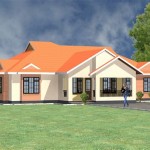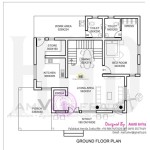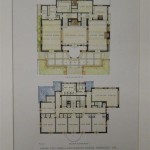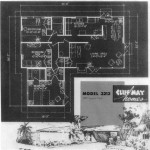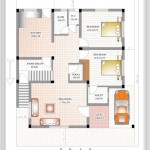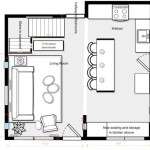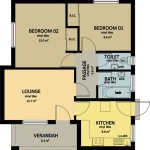Housing Planning and Management PPT: A Comprehensive Guide
Housing planning and management encompasses a wide array of activities aimed at providing adequate and affordable housing solutions for individuals and communities. Effective housing planning considers demographic trends, economic conditions, and environmental sustainability to create thriving living environments. Management practices ensure the long-term viability and quality of these housing solutions.
A PowerPoint presentation (PPT) is a valuable tool for communicating complex information about housing planning and management. It allows stakeholders, including government agencies, developers, community organizations, and residents, to understand the key concepts, challenges, and proposed solutions. A well-structured PPT can facilitate informed decision-making and collaboration.
Several essential components contribute to a comprehensive housing planning and management PPT. A clear introduction should set the stage, outlining the purpose of the presentation and the topics to be covered. This helps the audience understand the context and objectives.
An overview of the current housing situation should follow the introduction. This section can include data on housing availability, affordability, and quality. Statistics, charts, and graphs can effectively illustrate the current challenges and needs. Identifying specific issues, such as homelessness, overcrowding, or lack of accessible housing, provides a foundation for subsequent discussions.
Demographic trends play a crucial role in housing planning. Population growth, age distribution, and migration patterns influence the demand for different types of housing. The PPT should analyze these trends and project future housing needs based on anticipated changes. Visual aids, such as population pyramids and migration maps, can enhance understanding.
Economic factors significantly impact housing affordability and development. The PPT should address the relationship between housing costs, income levels, and employment opportunities. An analysis of market forces, including supply and demand dynamics, helps in formulating realistic housing strategies. Incorporating data on construction costs, interest rates, and government subsidies provides a comprehensive economic overview.
Environmental sustainability is an increasingly important consideration in housing planning. The PPT should discuss strategies for minimizing the environmental impact of housing development and management. Topics might include energy efficiency, water conservation, waste management, and the use of sustainable building materials. Images and diagrams can illustrate eco-friendly housing designs and technologies.
Community engagement is vital for successful housing initiatives. The PPT should emphasize the importance of involving residents, community organizations, and other stakeholders in the planning process. Methods for gathering feedback and ensuring community participation should be outlined. Examples of successful community engagement initiatives can add value to the presentation.
Different housing types cater to diverse needs and preferences. The PPT should explore various housing options, including single-family homes, multi-family dwellings, affordable housing units, and specialized housing for seniors or individuals with disabilities. Visual representations of different housing models can aid comprehension.
Housing finance and funding mechanisms are crucial for implementing housing plans. The PPT should explain different funding sources, such as government grants, private investment, and community development loans. Clearly presenting the financial aspects of housing development and management ensures transparency and accountability.
Legal and regulatory frameworks govern housing development and management. The PPT should outline relevant laws and regulations, including zoning ordinances, building codes, and fair housing practices. Understanding the legal landscape ensures compliance and protects the rights of all stakeholders.
Effective housing management practices are essential for maintaining the quality and affordability of housing units. The PPT should discuss strategies for property management, tenant relations, rent collection, and maintenance. Best practices for efficient and responsive housing management should be highlighted.
Technology plays an increasingly important role in housing planning and management. The PPT can explore how technology improves efficiency, enhances communication, and facilitates data analysis. Examples might include online platforms for housing applications, property management software, and geographic information systems (GIS) for spatial analysis.
Case studies of successful housing initiatives can provide valuable insights. The PPT can showcase examples of effective planning and management strategies in different contexts. Analyzing the successes and challenges of these projects provides practical lessons for future endeavors.
Future trends in housing planning and management should be considered. The PPT can explore emerging concepts, such as smart housing technologies, co-living arrangements, and innovative financing models. Addressing future trends ensures the long-term relevance of housing strategies.

Five Yearly Affordable Housing Development Process Roadmap Powerpoint Slides Diagrams Themes For Ppt Presentations Graphic Ideas

Estate Planning Powerpoint Template Ppt Slides

Ppt Infrastructure Planning And Management Powerpoint Presentation Free Id 1643098

Land Development Affordable Housing And Community Resources Presentation Powerpoint Images Example Of Ppt Slide Layouts

Free House Google Slides And Powerpoint Templates Presentationgo

Commercial Property Management Powerpoint Template Ppt Slides

Top 10 Land Development Plan Templates To Design Your Dream Project Free Attached

Houses Matrix For Powerpoint And Google Slides Presentationgo

Iot In Housing Powerpoint Template Ppt Slides

Powerpoint Template And Background With New House Plans Real Estate Presentation Graphics Example Slide Templates

